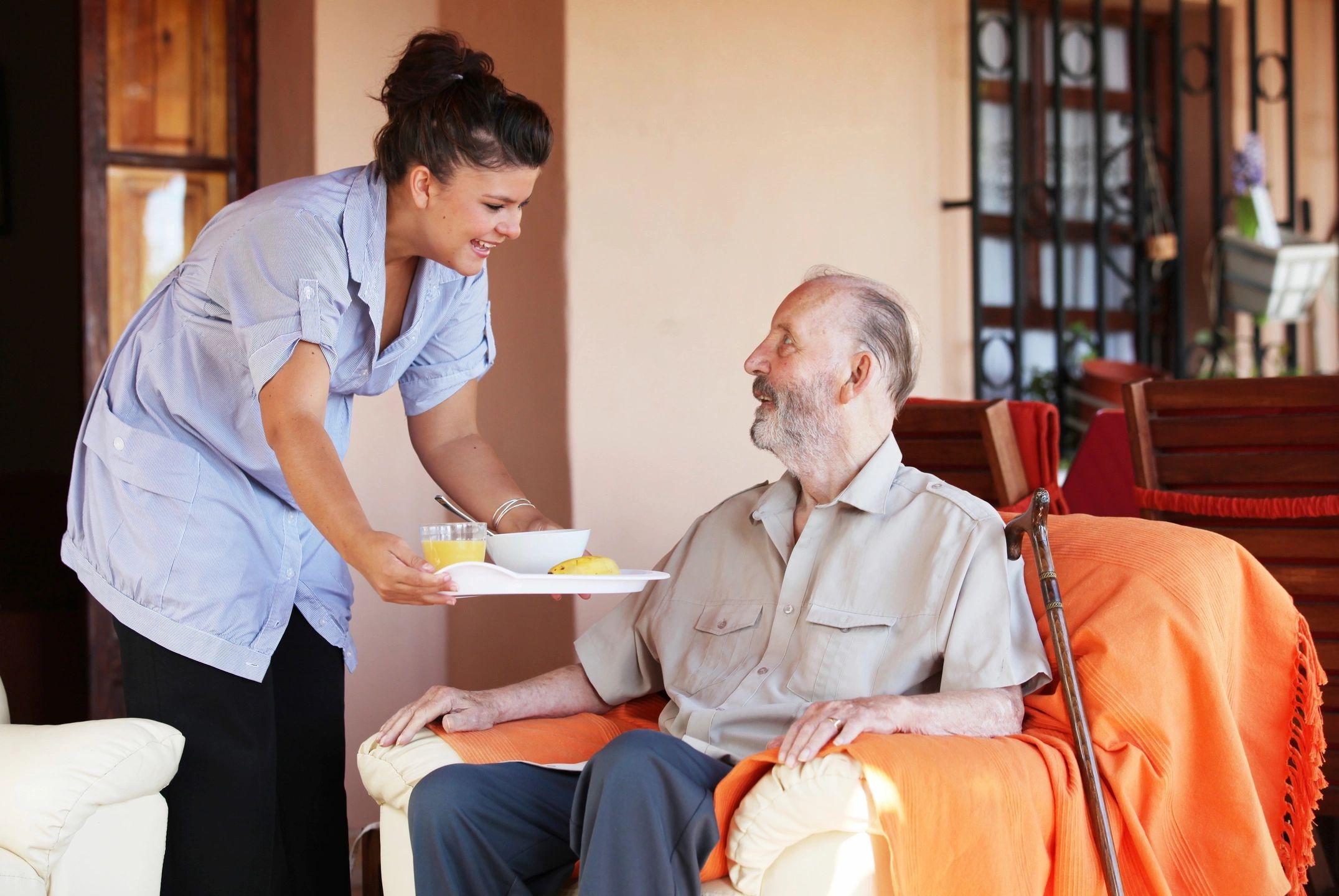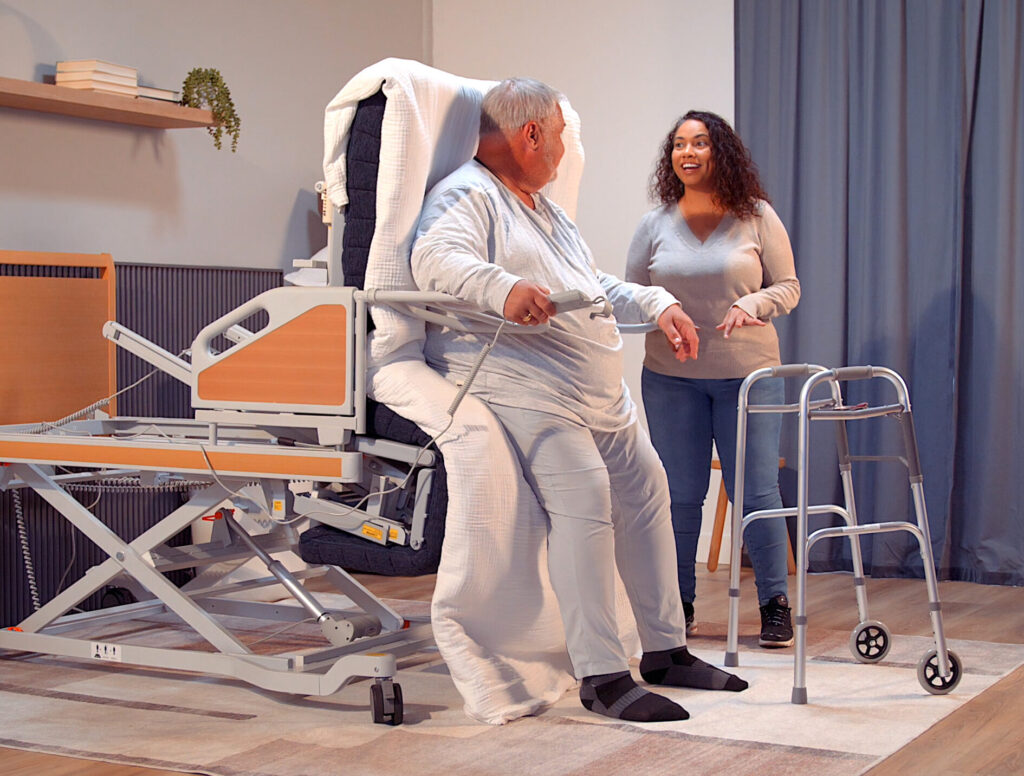
Hospital Standing Beds: A Breakthrough in Senior Homecare & Rehab
As the senior population grows, the need for innovative healthcare solutions to enhance quality of life and ease the workload of caregivers has never been more pressing. One such innovation making waves in the healthcare industry is the hospital standing bed. These specialized beds allow patients to transition from a lying position to a standing one, offering significant advantages for both patients and caregivers. In particular, the ReNuCare® Standing Bed by Key Way Medical stands out as a cutting-edge solution designed to promote patient mobility, safety, and dignity.
In this article, we’ll explore the transformative role that hospital standing beds play in senior care, particularly within assisted living, homecare, and occupational therapy settings.
What Are Hospital Standing Beds?
Hospital standing beds are designed to help patients who have limited mobility transition safely between lying, sitting, and standing positions. Unlike traditional hospital beds, which only allow for adjustments in incline or reclining positions, standing beds can raise the patient to a full or partial standing position. This added function not only aids in patient mobility but also helps prevent complications related to prolonged immobility.
Key features of hospital standing beds include:
- Automatic standing functions to ease transitions.
- Customizable positioning to accommodate different therapy needs.
- Safety controls to ensure both patients and caregivers remain safe during transfers.
The ReNuCare® Standing Bed takes these benefits a step further by integrating advanced features such as fully automated adjustments and eco-friendly design, making it a leader in sustainable healthcare equipment.
The Benefits of Standing Beds for Senior Care
Hospital standing beds, like the ReNuCare® Standing Bed, provide numerous benefits for senior care, whether in assisted living, homecare, or rehabilitation settings. These benefits include:
Promoting Mobility & Rehabilitation
Standing beds play a crucial role in maintaining or improving senior mobility, which is vital in preventing muscle atrophy and supporting overall health. They are particularly useful in:
- Rehabilitation programs for stroke survivors and patients recovering from surgery.
- Physical therapy routines where standing exercises are key for regaining strength and balance.
- Occupational therapy treatments focused on improving functional mobility for daily activities.
By allowing patients to stand with support, standing beds help build strength, maintain joint flexibility, and enhance circulation.
Improved Circulation and Pressure Relief
- Enhance blood flow to the lower extremities, reducing the risk of deep vein thrombosis (DVT).
- Prevent pressure sores by regularly shifting the patient’s weight, redistributing pressure, and improving skin health.
These benefits are particularly important for elderly patients with limited mobility who are at high risk for these complications.
Enhanced Dignity and Quality of Life
The ability to stand and move, even with assistance, has a profound impact on the mental and emotional well-being of seniors. Hospital standing beds help restore a sense of independence and dignity by allowing patients to:
- Participate in daily activities such as grooming, eating, and light exercises.
- Engage socially with others from a standing or sitting position, which can boost morale and combat feelings of isolation.
Caregiver Efficiency & Safety
One of the biggest challenges in senior care is the physical toll that transferring and repositioning patients takes on caregivers. The ReNuCare® Standing Bed addresses this issue by:
- Reducing caregiver strain through its automated standing and positioning features.
- Minimizing the risk of injuries to both patients and caregivers during transfers.
- Increasing caregiver efficiency, allowing more time to focus on other tasks or patients.
These improvements not only enhance patient care but also reduce workplace injuries among healthcare staff.
The Role of Standing Beds in Retirement Facilities and Homecare
Hospital standing beds are valuable assets for both retirement facilities and homecare settings, offering flexibility and safety features that cater to the diverse needs of seniors and caregivers alike.
For Assisted Living & Retirement Facilities:
- Increased Care Efficiency: Retirement facilities often deal with high patient-to-staff ratios, making it essential to have equipment that streamlines patient handling. The ReNuCare® Standing Bed helps staff move patients quickly and safely, reducing the time and effort required for patient transfers.
- Improved Resident Experience: Standing beds allow seniors to participate in daily activities, enhancing their quality of life. Many retirement facilities that have implemented standing beds report higher resident satisfaction and better health outcomes due to increased mobility.
- Facility Success Stories: Some retirement facilities have shared their success with standing beds, noting improved physical rehabilitation outcomes and reduced incidents of pressure ulcers and falls.
For Homecare Family Caregivers:
- Ease of Use: Family caregivers who lack professional training often find it difficult to manage the physical demands of caregiving. The ReNuCare® Standing Bed is designed with user-friendly controls that make it easy for caregivers to position and stand their loved ones without assistance.
- Enhanced Care at Home: With a standing bed at home, seniors can enjoy the benefits of professional-grade care equipment in a familiar environment. Family caregivers can provide high-quality care while reducing their own physical strain.
Standing beds bring peace of mind to both caregivers and patients by promoting safety, dignity, and independence.
Occupational Therapists’ Guide to Standing Beds
Occupational therapists play a vital role in helping seniors regain their independence through therapeutic activities and exercises. Standing beds are a key tool in rehabilitation for patients with limited mobility, offering several benefits:
How Occupational Therapists Utilize Standing Beds
Rehabilitation for Stroke Patients: Stroke survivors often face challenges with mobility, balance, and coordination. Standing beds help therapists incorporate weight-bearing activities into their rehabilitation routines, improving patients’ overall strength and balance.
Post-Surgery Recovery: After hip, knee, or spinal surgeries, patients may be immobile for extended periods. Standing beds allow for safe, gradual reintroduction to standing, which aids in faster recovery and better long-term outcomes.
Exercise & Strengthening Programs: Therapists can use standing beds to engage patients in supported standing exercises, which improve endurance, strength, and cardiovascular health.
Improving Long-Term Outcomes
Early intervention with standing therapy can prevent complications such as muscle wasting, joint stiffness, and pressure ulcers.
Evidence-based results show that standing therapy improves functional mobility, independence, and quality of life in elderly patients.
Occupational therapists can greatly enhance their patients’ outcomes by integrating standing beds like the RenuCare® Standing Bed into their treatment plans.


Key Way Medical’s ReNuCare® Standing Bed: Leading the Way in Innovation
The ReNuCare® Standing Bed by Key Way Medical is revolutionizing senior care by combining advanced technology, safety features, and an eco-friendly design. Here’s what makes it stand out:
- Automated Standing Functions: Standing Bed’s fully automated adjustments allow patients to safely transition from lying to standing with minimal effort from caregivers.
- 4 Customizable Positioning Options: The bed offers 4 multiple positioning options: sleeping, reclining, sitting, and standing to accommodate different patient needs, from therapy sessions to resting comfortably.
- Safety Features for Caregivers: Equipped with safety rails, remote controls, and emergency stop buttons, the bed ensures the safety of both patients and caregivers during transfers.
- Sustainability and Eco-Friendly Design: In line with Key Way Medical’s commitment to sustainability, the bed uses energy-efficient motors and recyclable materials, making it a greener choice for healthcare facilities.
Compared to traditional hospital beds, the ReNuCare® Standing Bed offers superior functionality, safety, and patient-centered design, making it the preferred choice for healthcare professionals.
Enhancing Senior Care with Standing Beds
The ReNuCare® Standing Bed is an essential tool for improving the quality of life for seniors, easing the workload for caregivers, and enhancing the outcomes of rehabilitation programs. Whether in a retirement facility, homecare setting, or occupational therapy clinic, this innovative bed can help patients maintain their mobility, dignity, and independence.
If you’re looking to invest in a standing bed that meets the highest standards of quality, safety, and sustainability, consider the ReNuCare® Standing Bed by Key Way Medical. For more information or to schedule a demo, contact us today.
References
The Impact of Mobility and Physical Activity on the Health of Older Adults – National Institutes of Health. Retrieved from https://www.ncbi.nlm.nih.gov
Benefits of Standing Beds in Rehabilitation – American Physical Therapy Association. Retrieved from https://www.apta.org
Occupational Therapy and the Role of Assistive Devices in Patient Mobility – American Occupational Therapy Association. Retrieved from https://www.aota.org
Improving Circulation in Bedridden Patients – Mayo Clinic. Retrieved from https://www.mayoclinic.org
Long-Term Effects of Standing Therapy in Elderly Patients – Journal of Geriatric Physical Therapy. Retrieved from https://journals.lww.com/jgpt
Preventing Pressure Ulcers in Seniors – Agency for Healthcare Research and Quality (AHRQ). Retrieved from https://www.ahrq.gov
The Benefits of Bed-Based Mobility for Caregiver Efficiency – Journal of Healthcare Management. Retrieved from https://journals.sagepub.com
Sustainability in Healthcare Equipment – World Health Organization (WHO). Retrieved from https://www.who.int


